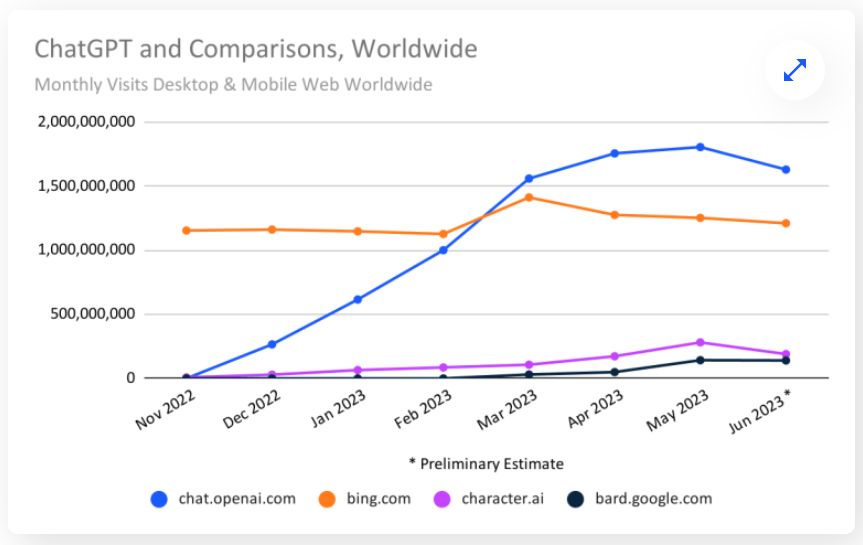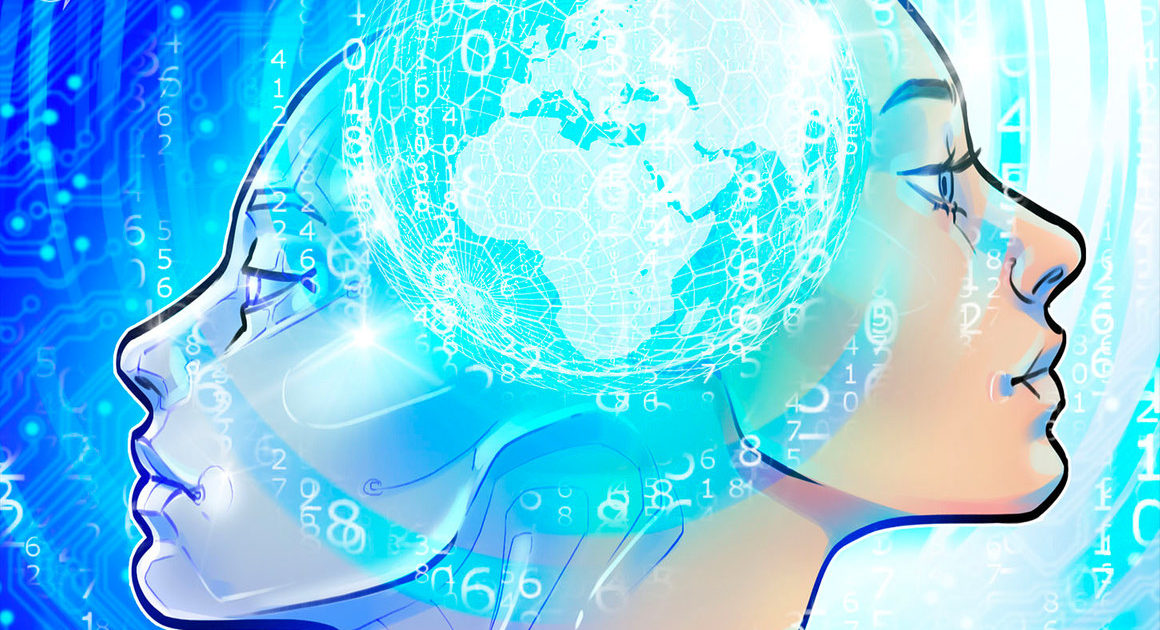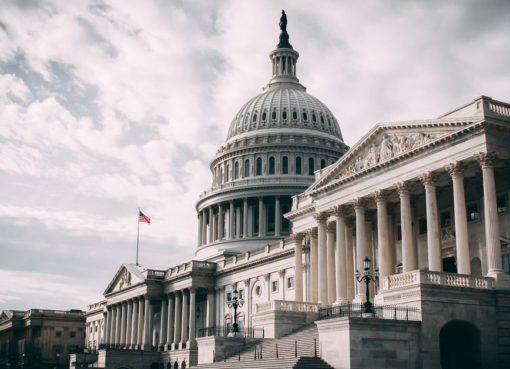Artificial intelligence (AI) has seen tremendous growth in recent years, exploding into popular culture and industry and leading to comparisons with the now infamous dot-com bubble and crash of the 1990s.
During the late 1990s up until the early 2000s, internet-based companies were the subject of massive hype and investment, with the sector peaking at a value of $2.95 trillion before slumping to $1.195 trillion as capital dried up and investors left in droves, causing many companies in the industry to go bust.
According to data from analytics platform Statista, the AI market has seen steady growth since 2021, with the current market size estimated to be around $200 billion and forecasted to reach $1.8 trillion by 2030.
Speaking to Cryptox, Henry Nothhaft Jr., who has worked in the AI industry since 2009 in various roles and founded the early AI software company Trapit, said the rapid expansion of AI and the dot-com bubble share some key attributes.
Nothhaft pointed to the scale of impact on the economy and society in both cases. AI, in particular, has been a polarizing topic, prompting tech leaders like Elon Musk to warn of impending doom while also investing in the sector.
Related: AI-related crypto returns rose up to 41% after ChatGPT launched: Study
“Both represent transformative technological innovation that redefine industries and change societal behaviors,” he said.
“As with the dot-com bubble, with AI, we’re experiencing a hype cycle characterized by rapid innovation, a frothy investment environment, a lot of new entrants and, I think, inflated expectations,” Nothhaft added.
AI still in its infancy
Although Nothhaft thinks it’s still early to make a call on just how inflated expectations are for AI, he does believe that most of the AI companies created during this hype period will fail and a small number of winners will shape the future of the industry.
OpenAI’s chatbot ChatGPT launched in November 2022 and quickly became one of the fastest-growing web platforms in history, eclipsing 1 million daily users in just five days and reaching the 100 million monthly users mark by January 2023.
However, it has seen a dropoff in traffic recently, and rivals such as Google’s Bard, Microsoft’s Bing and Character.ai have so far failed to reach the same levels of success.

According to Nothhaft, AI won’t experience a crash on the same scale as the dot-com bubble though. Unlike the early years of the internet, which he thinks were more a period of exploration and novelty than utility, AI has already seen applications across various sectors, including media, healthcare, finance, transportation and education.
“While AI is just in the infancy of its capabilities, these applications of AI are not future projections — they’re here and now. AI is delivering tangible value today,” Nothhaft said.
“Soon, it will be challenging to distinguish between the AI industry and the broader software industry, as AI will become a ubiquitous part of the digital landscape,” he added.
AI and crypto
AI’s rise has drawn parallels with crypto as well, which has had its own meteoric rise over the last decade, surpassing a total market cap of $3 trillion at its peak in November 2021 before losing more than half its value in 2022.

Initial coin offerings (ICO) gained enormous popularity as a fundraising technique for blockchain initiatives between 2016 and 2017. One key benefit was that entrepreneurs could receive funds directly from the crypto community.
Nonfungible tokens (NFT) also experienced a massive boom period, but Nothhaft said NFTs and ICOs couldn’t be more different from AI.
Related: Crypto is ‘just like the end of the 90s with the internet bubble,’ says Hodl CEO Maurice Mureau
According to Nothhaft, NFTs and ICOs represent niche applications of blockchain tech, while AI represents substantial technological innovation with wide-ranging, tangible applications.
“Unlike the crypto space, where the hype has often exceeded reality, the promise of AI is grounded in substantial technological advancements and nearly limitless applications,” he said.
“The growth of AI may seem rapid, but it’s not a bubble in the way that we’ve seen with certain crypto phenomena.”
Sam Huber, CEO of metaverse platform LandVault, shared another perspective with Cryptox. He believes that NFTs and ICOs do share some similarities to the AI market, particularly in terms of initial hype, rapid growth and subsequent potential for market corrections — but differ in the factors driving growth.
Related: SVB collapse chilled NFT trading volumes: DappRadar
According to Huber, AI’s growth is primarily driven by technological advances and practical applications, whereas crypto and related assets, such as NFTs and ICOs, frequently attract speculative investments motivated by the prospect of quick financial gains.
“AI is a broad field encompassing various technologies and applications, whereas cryptocurrencies such as Bitcoin and Ethereum are specific digital assets,” he said.
“The value proposition of AI is its ability to improve and transform multiple industries, whereas cryptocurrencies serve primarily as decentralized digital currencies or investment assets,” Huber added.
Differences from the dot-com bubble
Huber said the rapid growth of AI and the dot-com bubble do share some parallels — specifically that in both cases, not all businesses or investment opportunities in the space have a viable business model.
“Many businesses were calling themselves ‘internet businesses’ by just having a website. It is similar to many companies today calling themselves ‘AI companies’ because they plug into ChatGPT,” he said.
“These companies attract speculative investment but are not building significant differentiation nor defensible technology. When these companies fail to deliver or raise their next round, it can cause a market crash.”
However, Huber says it’s a very different environment to the 1990s when the companies in the dot-com sector were going public much earlier and, once on the market, retail investors were able to invest in them.
Related: Experiments show AI could help audit smart contracts, but not yet
“Today, companies are able to raise a lot more capital privately, so do not need to list,” Huber said.
“If they fail, the market impact is much less because they only have institutional investors on their cap tables, so the general public is protected and mass panic is avoided,” he added.
Overall, Huber argues that one of the main differences between other tech bubbles and AI is that it’s supported by tangible applications and use cases, with many companies incorporating AI into their operations and products.
The crypto industry is ripe with AI projects, and the music and film industries have also begun experimenting with it.
AI-generated songs are getting scary good.
The music industry is NOT prepared for this.
Here’s 9 songs created 100% with AI:
1. Michael Jackson singing “I Feel It Coming” by the Weeknd pic.twitter.com/XiaHDSrXOf
— The AI Solopreneur (@aisolopreneur) April 18, 2023
“This fundamental distinction implies that AI’s advancement is driven by practical utility rather than speculation alone,” Huber said.
AI on a different path than dot-com bubble
Osman Masud, CEO of independent video game developer The Game Company — which uses AI in its products — told Cryptox it’s unlikely AI will follow the same path as the dot-com bubble.
“The dot-com bubble was driven by speculation around internet companies. AI technologies have already proven their practical use in industries such as healthcare, finance and automation,” he said.
“While AI and the dot-com bubble have experienced rapid expansion, the difference lies in the level of maturity and tangible value generated,” Masud added.
Related: Apple has its own GPT AI system but no stated plans for public release: Report
Overall, Masud believes that the growth of AI is being driven by advancements in machine learning, deep learning and neural networks, which continue to evolve and improve.
With the potential to transform industries and improve efficiency, he said the AI industry is expected to continue to experience significant growth in the years to come rather than collapse.
“While there may be fluctuations and market corrections, AI’s long-term impact and potential are expected to be substantial due to its wide-ranging applications and transformative capabilities,” Masud said.




